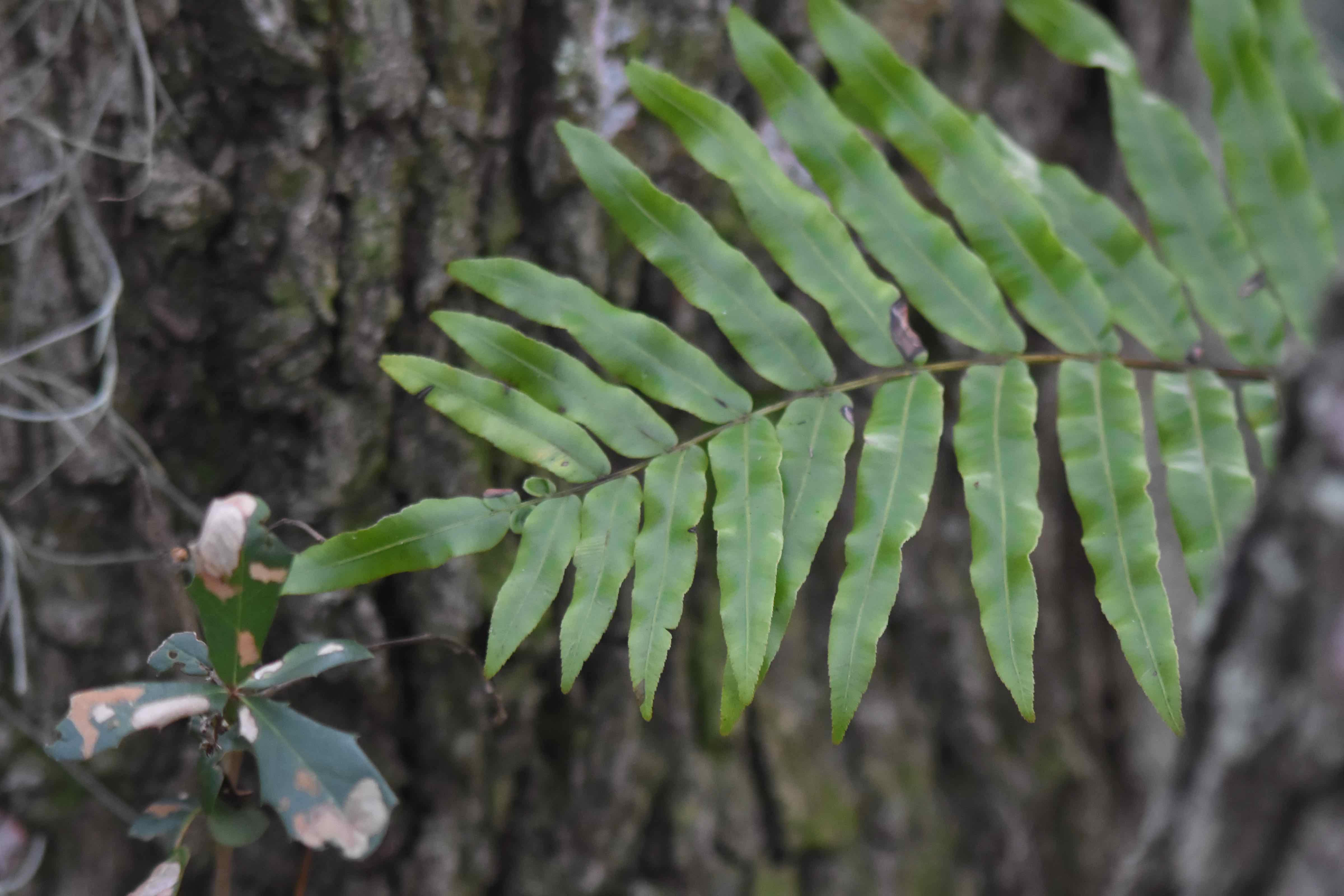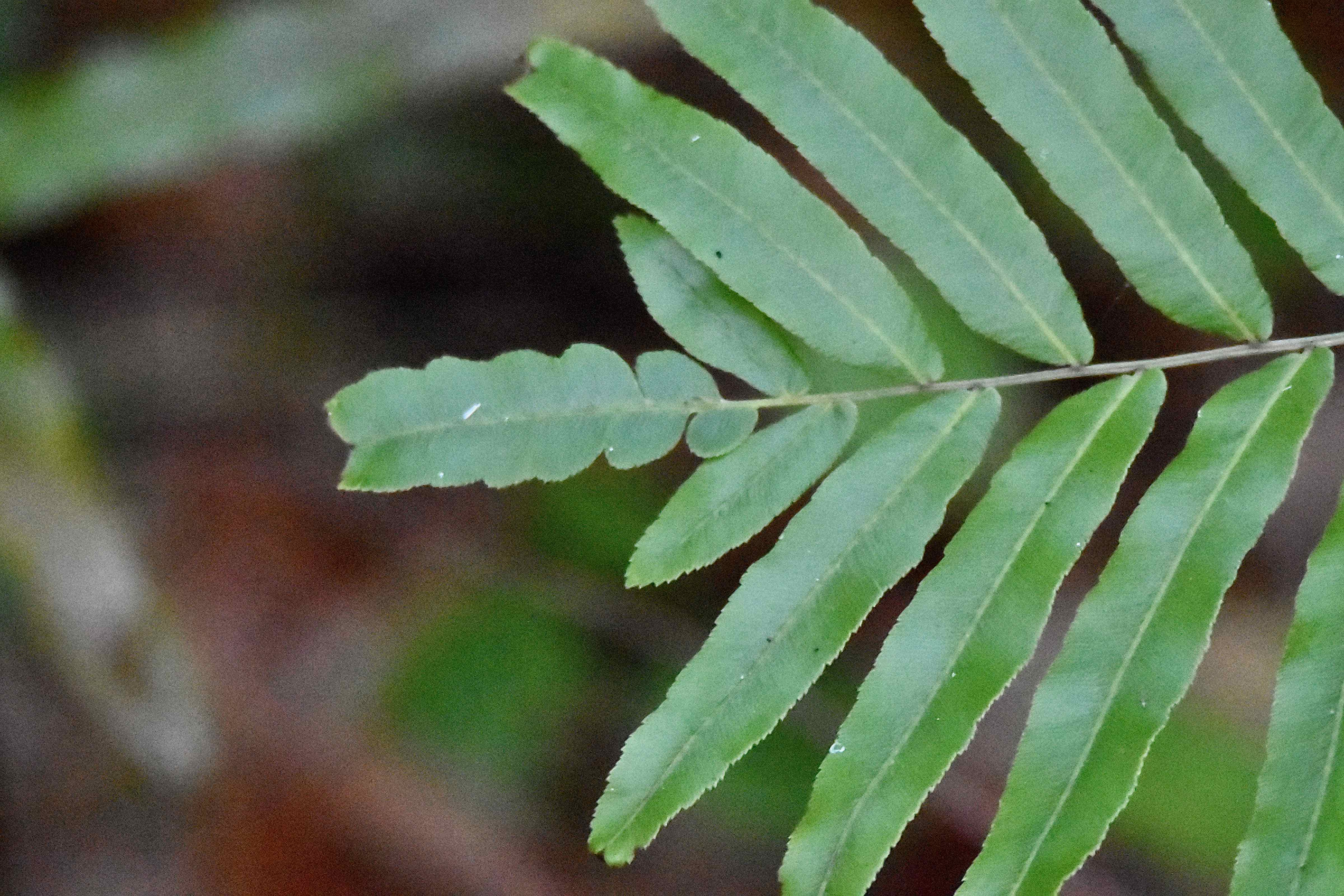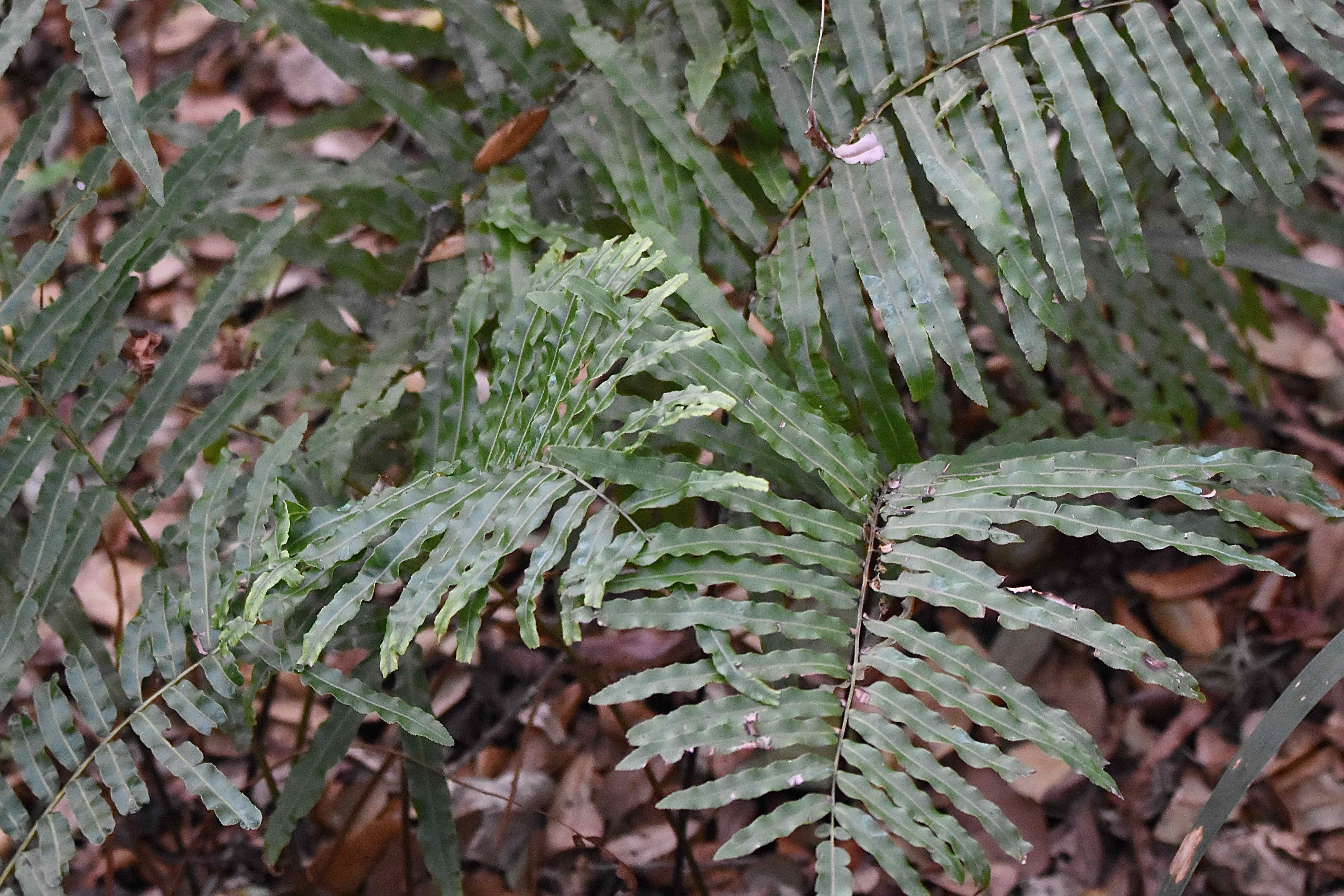
Swamp fern, photographed at Delray Oaks Natural Area, Delray Beach, Palm Beach County, in March 2017.
The swamp fern, Blechnum serrulatum, has one thing in common with Count Dracula. No, it doesn't suck blood, of course, nor does it have a Transylvanian accent. It does, however, prefer dark over lighted places. Oh, it certainly can take the sun better than the Count, but the light will stunt its growth.
Swamp fern is a Florida native, found throughout the Peninsula from St. John's County southward to the Keys. It's also a native of Central America, South America, the Bahamas, Caribbean and Mexico. It's also found in Australia, of all place, but we're not sure if the plant is native to Down Under. Florida is the only state in the union where it's found.
It is a common understory plant in swamps, marshes, wet hammocks and wet prairies. It can grow to four feet tall in shady places; where it grows in full sun, swamp fern tends to be dwarf in form. It likes moist soil with a lot of organic matter.
Swamp fern is fairly easy to identify; it is an upright plant, with leaflets that grow opposite each other along the stem. The leaflets are slightly crinkled and the edges are finely serrated. Like all ferns, this guy reproduces via spores that grow in sori found on the underside of the leaflets. In the case of swamp fern, the sori grow along the main vein of the leaflets. A leaflet will grow at the tip of each frond. New growth can have a pink or copper tinge, seen in the left side of the main photo on the page. That coloring is a typical trait seen in members of the family to which swamp fern belongs.
Swamp fern also spreads via creeping rhizomes, or stems, and can form extensive patches where it is the only plant growing. If conditions are right, the rhizomes will climb into trees, and the plant will become partly epiphytic, or partly an air plant, living on a host but not taking anything from it.
There's not a lot known about how swamp fern has been used in traditional medicine, according to the late, eminent ethnobotanist Daniel F. Austin, author of Florida Ethnobotany. In parts of the Caribbean, it's been used to treat cuts. In Guyana, the leaves are used to treat absesses. In French Guiana, the rhizomes are used to make a vermifuge — a remedy for parasitic worms.
According to one account, the Aboringines of Australia used swamp fern roots and rhizomes as food, digging them up, sun-drying them for a time, then roasting them. They would be eaten with fish, crabs and oysters.
In Florida, it's used as a landscaping plant — as a ground cover along the edges of ponds and lakes and in shady areas — in restorations and in natural landscapes. One down side to it: swamp fern will spread into areas where it's not wanted unless it is contained. It is grown commercially.
Other common names for swamp fern include toothed midsorus fern (a name unlikely used by many nonscientists), saw fern and marsh fern. It is a member of Blechnaceae, a family of about 250 ferns, most of which live on the ground.



